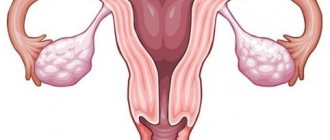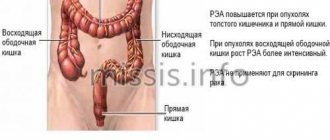To diagnose many diseases of the stomach, intestines, and pancreas, gastroenterologists prescribe a stool test, or coprogram. Examination of feces by chemical, physical and microscopic methods is carried out to determine several indicators. Their changes may be signs of diseases of the digestive system. The totality of such deviations of the coprogram from the norm, or scatological syndromes, provides the doctor with valuable information about the diagnosis.
general characteristics
Coprogram - analysis of the physical, chemical and microscopic characteristics of feces. The method is an important diagnostic component for identifying dysfunctions of the stomach, intestines, pancreas, and liver. Macroscopic examination of feces includes the study of physical characteristics: quantity, consistency, color, smell, presence of impurities. During microscopic examination of stool, native and colored preparations are examined. The method is used at the diagnostic stage and to monitor the effectiveness of treatment.
Analysis of stool for helminth eggs and protozoan cysts
Helminths (worms) are parasitic worms that live in the body of humans and animals and cause diseases called helminthiasis (helminthic infestations). The disease in humans is most often caused by roundworms (nematodes) and flatworms (platytodes), which are divided into tapeworms - cestodes and flukes - trematodes. Helminths change their host in the process of life development, and the range of hosts, routes and mechanisms of transmission are individual.
Clinical manifestations are largely determined by the localization of the parasite, its number and feeding habits. Helminths, parasitizing in the human body, can have a mechanical effect, damaging the tissues and organs of the host, toxic and allergic phenomena, metabolic disorders, closing the lumen of the intestines, excretory ducts of the liver, gall bladder, pancreas, disrupting intestinal motility, irritating the receptors of the intestinal wall.
Protozoa are single-celled organisms. Like helminths, during the development process protozoa go through several stages and change hosts. Many protozoa have two forms of existence - vegetative and cystic. The cyst has a durable shell and ensures the survival of the protozoan in unfavorable, and even extreme, conditions. It is cysts that usually infect humans.
A stool test for helminth eggs and protozoan cysts must be taken if a parasitic infection is suspected, to monitor the effectiveness of antiparasitic treatment, before hospitalization, when preparing a medical record, or certificates. For example, for children before visiting the pool.
In the CMD laboratory, stool analysis for helminth eggs and protozoan cysts is carried out using two different methods:
- Feces for helminth eggs and protozoan cysts: microscopic method; "thick smear" method and Kato staining
- Modified sedimentation method using PARASEP concentrators (enrichment method). Analysis of feces for helminth eggs and protozoan cysts using a Parasep concentrator: the use of PARASEP concentrators makes it possible to identify helminths and protozoa even in small quantities.
Patient preparation rules
Standard conditions:
Feces are collected after spontaneous defecation, should not contain foreign impurities and are delivered to the ML “DILA” in Kiev within 2 hours. Material for research collected after an enema, taking medications that affect peristalsis, taking castor or vaseline oil, after administering suppositories, or drugs that affect the color of stool (iron, bismuth) is not accepted. The biomaterial is accepted according to the biomaterial collection schedule at the ML department “DILA”.
You can add this study to your cart on this page
How to properly prepare for analysis?
- Antacids (Rennie, Almagel, Maalox, Phosphalugel)
- Antidiarrheal drugs (Smecta, Neosmectin, Polifan, Imodium, Enterol)
- Anthelminthic drugs (Nemozol, Dekaris, Vermox, Helmintox)
- Antibiotics - any kind
- Iron and bismuth preparations (Iron - Ferrum Lek, Cosmofer, Sorbifer Durules, Bismuth - Vikalin, Vikair, Bisal)
- Therapeutic and cleansing enemas
- Laxatives (Bisacodyl, Senna extract, Forlax, Portalac)
- NSAIDs – non-steroidal anti-inflammatory drugs (Aspirin, Paracetamol, Ibuprofen)
- Also, be sure to warn your doctor about all medications that you are taking or took shortly before the test.
- If you have recently had a GI barium test or colonoscopy, you should tell your doctor because it may affect the test results.
- If you have been outside the country over the past few months, you should tell your doctor about the places you have been. Parasites, fungal infections, viruses and bacteria that are found in specific countries can affect test results.
- If at the time of testing you have bleeding hemorrhoids or a menstrual cycle, you should postpone the collection of material until these conditions are eliminated, as this may affect the result of the analysis.
- Also, do not use feces that have been in contact with cleaning agents or disinfectants used to clean the toilet, water or urine.
Interpretation:
- Quantity: v for constipation, ^ for impaired flow of bile, insufficient digestion in the small intestine (fermentative and putrefactive dyspepsia, inflammatory processes), for colitis with diarrhea, colitis with ulceration, accelerated evacuation from the small and large intestines. ^^ with pancreatic insufficiency. Consistency: ointment-like - characteristic of impaired pancreatic secretion and lack of bile flow; liquid - with insufficient digestion in the small intestine (putrefactive dyspepsia or accelerated evacuation) and large intestine (colitis with ulceration or increased secretory function); mushy - for fermentative dyspepsia, colitis with diarrhea and accelerated evacuation from the colon; foamy – for fermentative dyspepsia; sheep - for colitis with constipation. Large lumps of dense feces are excreted once every few days during constipation. Color. Black or tarry: gastrointestinal bleeding. Dark brown: insufficiency of gastric digestion, putrefactive dyspepsia, colitis with constipation, colitis with ulceration, increased secretory function of the colon, constipation. Light brown: with accelerated evacuation from the colon. Reddish: for colitis with ulceration. Yellow: with insufficient digestion in the small intestine and fermentative dyspepsia. Light yellow: with pancreatic insufficiency. Grayish-white: when bile does not enter the intestines. Odor. Putrefactive: for insufficiency of gastric digestion, putrefactive dyspepsia, colitis with constipation, intestinal movement disorders. Fetid: with impaired pancreatic secretion, lack of bile flow, increased secretory function of the colon. Weak: with insufficient digestion in the large intestine, constipation, accelerated evacuation from the small intestine. Unsharp: with colitis with ulceration. Sour: for fermentative dyspepsia; and also in infants. Reaction: neutral or slightly alkaline (pH 7.0-7.5) is normal. Slightly alkaline: with insufficient digestion in the small intestine. Alkaline: for insufficient gastric digestion, impaired pancreatic secretion, colitis with constipation, colitis with ulcerations, increased secretory function of the colon, constipation. Sharply alkaline: for putrefactive dyspepsia. An acidic reaction (pH.6.0-6.5) may be associated with the presence of fatty acids (accelerated evacuation of broken down chyme or impaired absorption as a result of the inflammatory process in the small intestine). A strongly acidic reaction (pH 5.0-5.5) is characteristic of enhanced fermentation processes in the small intestine (fermentation dyspepsia: fermentative dysbiosis, dysbacteriosis, colitis). A shift in pH to the alkaline side leads to the activation of putrefactive flora and the formation in the colon of ammonia and other components of putrefaction, which irritate the mucous membrane of the colon, causing maceration, then exudation and the development of putrefactive colitis, in which the pH of the feces is sharply alkaline (pH 8.5-9 5). Impurities: macroscopic examination of stool may reveal remains of undigested protein and plant food, mucus, various helminths or their fragments. Muscle fibers: detected primarily with insufficient gastric digestion, impaired pancreatic secretion and impaired absorption processes in the intestine. The presence of muscle fibers in feces is accompanied by a picture of putrefactive dyspepsia. Normally, there are single, rare muscle fibers in the fields of view (n/z). Connective tissue: with insufficiency of gastric digestion and with functional insufficiency of the pancreas. Neutral fat: insufficiency of the secretory function of the pancreas. Fatty acids: lack of bile flow, insufficient digestion in the small intestine, accelerated evacuation from the small intestine, fermentative dyspepsia, insufficient pancreatic secretion and accelerated evacuation from the large intestine. Soaps: all conditions listed above for fatty acids, but with a tendency to constipation. Normally, single in p/z. Starch: in case of impaired pancreatic secretion, insufficiency of digestion in the small intestine, fermentative dyspepsia, accelerated evacuation from the colon, insufficiency of gastric digestion. Iodophilic flora: in case of insufficiency of digestion in the small intestine, accelerated evacuation from the large intestine , fermentative dyspepsia, impaired secretion of the pancreas. Digestible fiber: insufficiency of gastric digestion, with putrefactive dyspepsia, lack of bile flow, insufficient digestion in the small intestine, accelerated evacuation from the colon, fermentative dyspepsia, with insufficient secretion of the pancreas, colitis with ulcerations. Indigestible fiber has no diagnostic value. Mucus: for colitis with constipation, with ulcerations, fermentative and putrefactive dyspepsia, increased secretory function of the colon, noted for constipation. Red blood cells: for colitis with ulcerations, dysentery, hemorrhoids, polyps, rectal fissure. “Hidden” blood - for peptic ulcers of the stomach and duodenum, for malignant diseases of the stomach and intestines. Leukocytes: for colitis with ulcerations. The appearance of leukocytes in the feces during a paraintestinal abscess indicates its breakthrough into the intestine; in the presence of a tumor, its disintegration. Helminth eggs: various helminthiases. Dysenteric amoeba (Entamoeba histolitica): the vegetative form and cysts are detected in amoebiasis, found only in fresh feces. Intestinal amoeba (Entamoeba coli): is not a pathogenic amoeba, however, upon microscopy of stool, it must be distinguished from the pathogenic dysenteric amoeba. Balantidium (Balantidium coli): vegetative form and cysts are found in freshly excreted feces with balantidiasis. Giardia (Lamblia intestinalis): vegetative forms and cysts, found with giardiasis. Typically, the vegetative form is detected only with profuse diarrhea or after the action of strong laxatives in “warm” freshly excreted feces.
Sample result (PDF)
Dysbacteriosis – cause or effect?
It is believed that dysbiosis is always a secondary condition, i.e. it cannot arise on its own. On the other hand, this condition can cause the development, for example, of intestinal infections and hypovitaminosis (vitamin absorption occurs mainly in the intestines).
Here are some factors that can cause an imbalance in the intestinal microflora:
- artificial feeding (early and/or too rapid introduction of complementary foods);
- diseases with a long course, causing a decrease in local and general immunity;
- deficiency of enzymes necessary for digestion;
- violation of intestinal motor function (with constipation or incomplete bowel emptying, rotting processes begin);
- taking certain medications (antibiotics, aspirin and other anti-inflammatory drugs, laxatives).
It is difficult for a child's body to tolerate any stress, such as climate change, physical or emotional overload. And this is also a possible cause of dysbiosis, especially in an infant.









